COPPICE AUDIO X1 LOUDSPEAKERS REVIEW
Janine Elliot takes a listen to the Coppice Audio’s standmount X1 loudspeakers that are created from sustainably sourced solid Ash in Malvern, UK.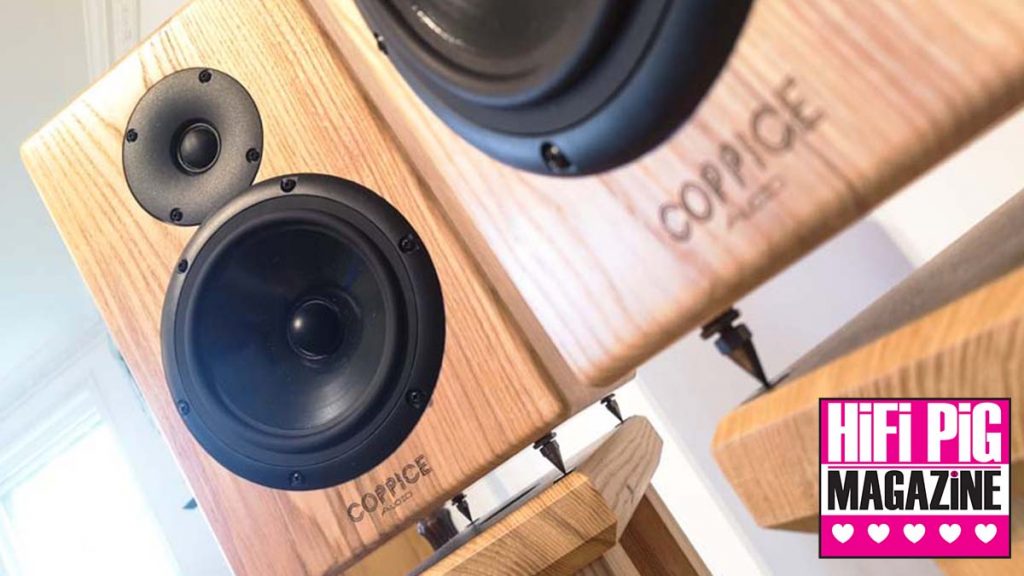
You’d be forgiven not knowing who Coppice Audio are, a company born in 2021 with ambitious intentions to not only produce speakers with great sound but also with equally enticing looks. The X1 stand mount and X2 and X3 floorstanders are indeed great lookers, largely due to the fact they are made entirely from Ash wood homegrown in the lower slopes of Malvern. There is no laminated MDF on offer here. The speakers even arrived in a company-made wooden box.
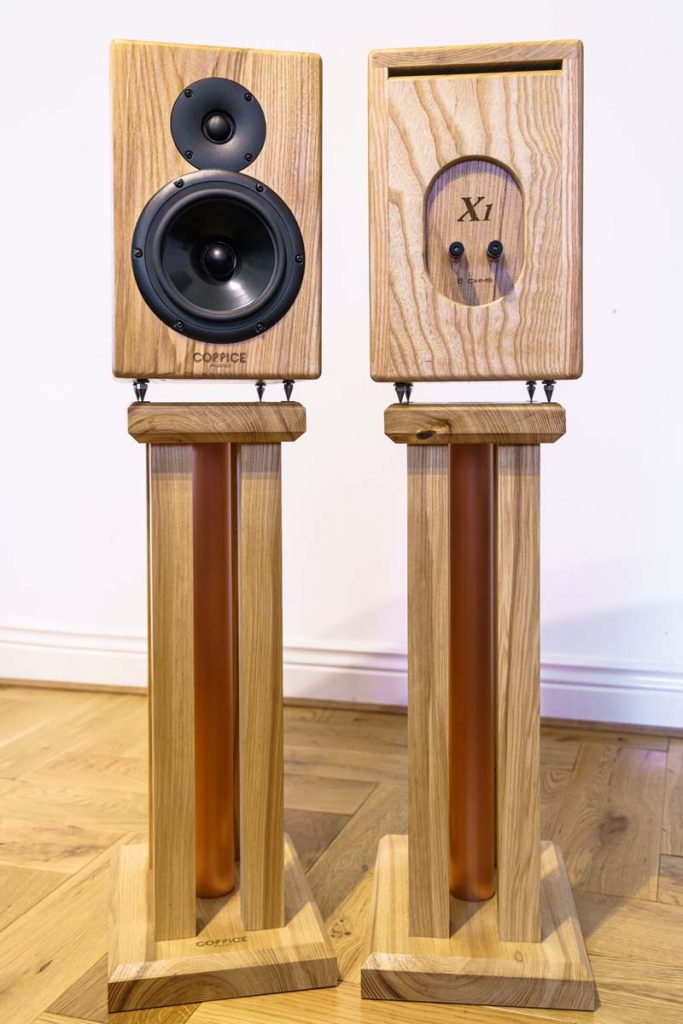
The Coppice Audio X1 speakers are made of solid wood.
Mal and Ryan, the creators of Coppice Audio have appropriate credentials. Both are carpenters/joiners by trade and Ryan has the engineering experience and is a music producer. They own three acres of woodland, mostly ash but also some oak, and are experimenting with “growing” furniture; it started by growing wooden stands literally out of the branches of the trees by shaping them and cutting the trees back to their bases to stimulate new growth (coppicing, hence the company name).
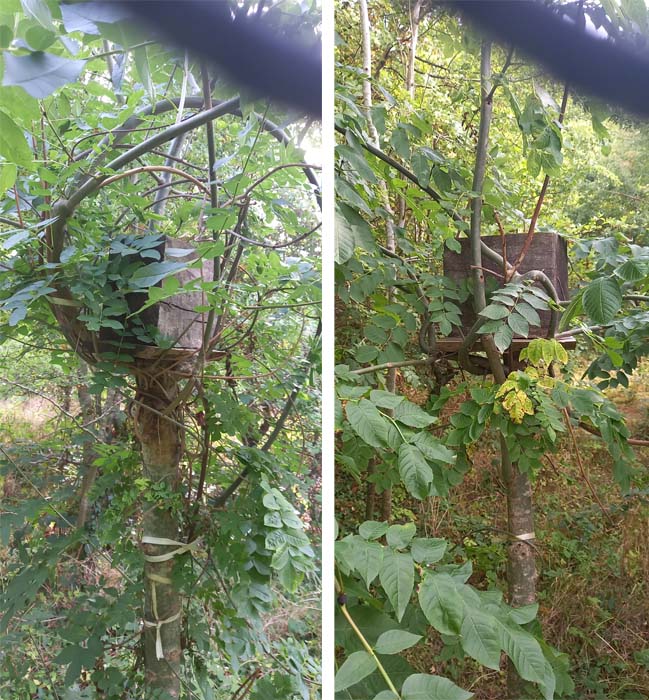
Coppice Audio started off by experimenting with “growing” speaker stands.
They then started designing loudspeakers to place on the top. All the wood used is from their three acres or is locally sourced. Whilst ash is standard, they will also produce speakers in your choice of wood, though Mahogany, for example, needs to be sourced from a reclamation yard as they don’t want to cut down new trees. They are particular about looking after the planet. Unfortunately, due to Ash dieback, they had to cut down some of their trees, though the wood is still able to be used when they need it. They can also offer oiled/stained wood, engravings, and paint jobs if you request, though these are extra to the standard price.
Their work is not limited to making speakers and speaker stands as they also produce two racks; a live-edge rack which has the edge bark of the tree to give it a very unique look, plus the modular X frame with moveable shelves. They also produce a range of wall sound-absorbing panels insulated with sheep’s wool (as it is denser and heavier, and is environmentally sustainable as opposed to being a man-made material). Their work goes even further than this, spending much of their time making oak-frame buildings. Their work is split between a building-site in the week and in their workshop in the weekends. This was a company I just had to find out about! Incidentally, Morgan cars are also made in Malvern, and these still use Ash frames in their manufacture.
THE SPEAKERS
The boxes have a 6 ½-inch high excursion paper cone and a 1 inch fabric dome, speakers courtesy of Peerless, with a letter-box type port at the rear. They come with single Rhodium plated connectors, so no bi-wiring. The cabinets are very expensive to manufacture so the price of £2495 plus £699 for the stands seems reasonable even before one has started to listen.
To produce the 22mm-thick wood to a good enough sound-deadening quality they have built a small kiln to remove any moisture which causes movement of the wood. After this, the inside of the cabinet is sealed. They found initially that there was too much movement and resonance in the wood, though they found that by staining the inside with a coat of lacquer improved it no end.
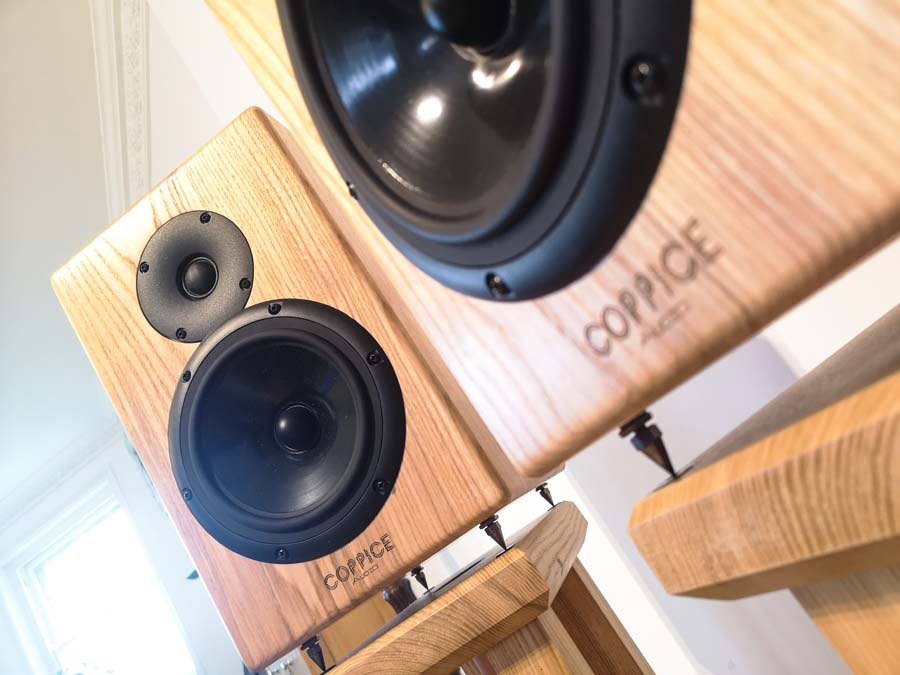
A kiln is used to remove all the moisture from the wood before building the X1 loudspeakers.
The crossover wiring is point-to-point using 99.9% pure solid-core copper with polyethylene dielectric. The X1 has a 2nd order crossover and the crossover point is 1800Hz, lower than the usual 3k that most speakers “suffer”, so I didn’t hear colouration at the important vocal and string frequencies. The tweeter coped well down to the lower point. The Crossover components include Sonicaps, Miflex copper caps, and Erse air-core inductors. Finally, the cabinet is braced with a double layer of damping material.
The stand is equally well made, matching the speaker well. At the centre of this stand is a copper pipe which is pre-filled with sand to improve the sound and increase the weight. The base has a choice of fixtures (feet and spikes) and the speaker itself sits on the stand via spikes.
COPPICE AUDIO X1 LOUDSPEAKERS SOUND
These 8-ohm speakers were wired up to my Synthesis/MFA amplification, using streamed FLACs initially, and then phono and reel to reel. As usual I gave it a lot of listening to find out its feats and foibles. My initial observation was “Wow! That bass!” It was so extended yet not over the top that other frequencies would suffer. The speaker is deceptive in appearance having significant depth, to help that bass power, and the letterbox-shaped port also works extremely well here, not adding colouration.
To start my listening sessions, I chose the Yes ‘Drama’ Album. This is great heavy rock from my youth and I think one of their best albums. That energetic bass was full but still very controlled, and vocals were clear and smooth. That 1800Hz crossover point was working well. To test the bass-end I often use Rene Aubry’s “Amnesie”, so I tried it again and that bass “Boom” at 24” and 52” (etc) were delivered so well here that I could almost feel the air moving. Not only was the bass good, but there was an excellent spaciousness in the instrumentation. This was not only L-R, but also front/back.
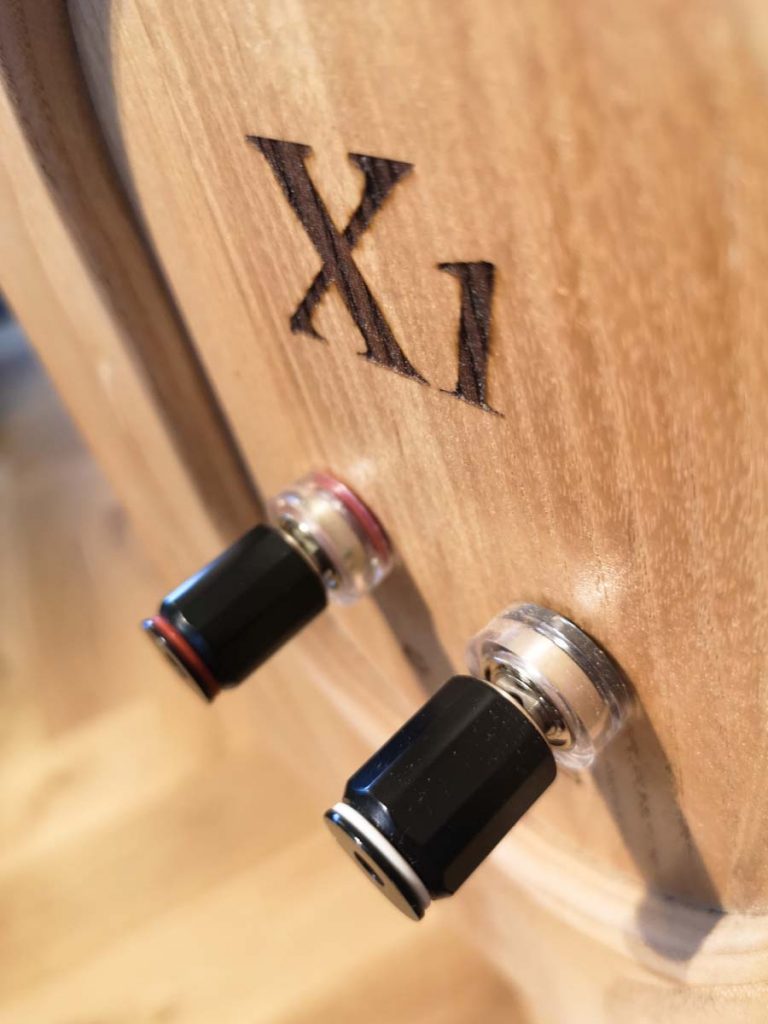
A single pair of good quality binding posts are used.
Next to be played was Hawkwind’s ‘Hall of the Mountain Grill’. Only on this album did I feel the vocals were set back a little further than I would like, but the explosion at the start of “Wind of Change” was epic. Queen’s ‘Jazz’ album on vinyl and “Flat Bottomed Girls” again showed the fat bottom from the bass guitar and kick drum, and there was an excellent depth of sound from such a relatively cheap speaker. If the speaker were covered over by a screen you’d be forgiven to think this was a bigger floor-standing speaker.
Turning to jazz and “Battle Royal” (Duke Ellington and Count Basie) there was pizazz, power, and a tidy sound at all frequencies. Indeed, all jazz I played worked well, with a warmth that made it sound so real in my room.
To classical and Mahler Symphony No. 4 (Czech Philharmonic, Semyon Bychkov), I could, at last, hear the kettle drums clearly at one end, and the triangle at the other extreme, and both tastefully portrayed. Strings were also performed well, with the positioning of all instruments on or slightly behind the axis of the speaker. That 3-dimensionality that I wanted to hear was very good for such an inexpensive speaker.
After much more listening it was clear that the bass was excellent, going down well below 50Hz and whilst the top end was good too, this was a very listener-friendly speaker that sometimes could be just a little too laid back. This actually made for excellent listenability and worked on all types of music.
I often use a Hemiolia Records reel-to-reel when reviewing. A large variety of music and instruments, which really test the speakers or amplifiers I am reviewing. This feeling of being a little too polite extended to these tracks but it didn’t seem an issue, the musicality far exceeded any criticism I might have. The clarinet in “Gelosomente Mia Voce” (Mirabassi/Taufic) was particularly well detailed, especially the breaths, with a warmth that made me smile from ear to ear. Detail front and back was much better here; the clarinet forward and the guitar behind. Both instrumentalists were well defined; for example the clear glissandi of scales from the clarinet. “Improvvisazioni” from Daniele Mencarelli had potent bass tom-tom bursts and excellent high end from the cymbals. This is a well-balanced design with an excellent crossover.
All the music was carefully crafted and made for good listening on whatever I threw at it. Only at times did I again find that it was slightly too relaxed, but if this speaker was up at £4000 I would still be content. “Para Biagio” (J. Girotto/F. Nastro Quartet) is a sad jazz number on soprano sax, piano, drums, and bass, but I did find it a bit slower than I was used to hearing it. The excitement just wasn’t there, allowing for the fact that this was sad music; everything was there in the right place, but the bite of the instruments was very slightly lost. The next track (“Treni a Vapore” Danielle Mencarelli Duo) was such good listening. The bass and vocal were in the room, or rather I was in theirs. Both were well matched in volume and the detail and depth from the speakers were good again; for a first attempt at a speaker this was excellent.
OK, Mal and Ryan spent time with mock-up speakers before they were happy with the end result – but happy they should be. Music was tight and the rear letterbox port was just right; some ports just add to sounds rather than just bringing out the correct bass. “May this Love” (Davide Pannozzo Trio) had brilliant detail; even hearing the horrid distortion on the guitar was louder than I expected. Again, the soundstage was excellent with the musicians behind the speaker axis. The solo violin performance from Pavlo Beznosiuk of Bach’s Toccata and Fugue in A minor (88.2/24 FLAC) was just electric and brilliantly portrayed through the speakers. I forgot I was listening to a digital source.
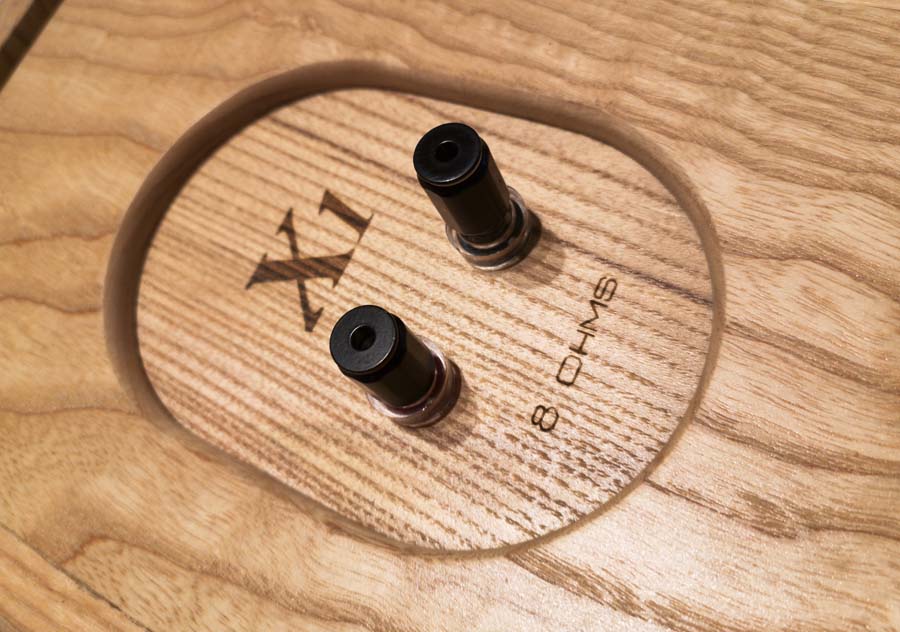
Build is excellent, as is detailing.
Finally, I went back to Yes and their not-so-loved album ‘Tormato’. It was originally named “Yes Tor” after the peak in Devon, but after keyboardist Rick Wakeman threw a tomato in anger at the album artwork, they decided to rename it Tormato. This was not a good time for the band and both Rick and their best-ever singer Jon Anderson left before they made another album. They both weren’t pleased with the sound and the mixing, and indeed this can be heard as a very intense album, with far too many notes between guitarist and keyboard. No speaker can clearly make an impact (Dolby A noise reduction was used in recording some of the tracks but there was confusion as to which were the tracks so it can sound too flat). The Coppice X1 did a mighty attempt at this music and only missed out slightly on what a bigger and more expensive speaker might muster.
CONCLUSION
OK, so I can’t just do a review and say everything is wonderful as reviews will all just say the same, and so there have to be winners and losers. This is a winner for £2495 (and even better if you add the stand) despite the slight warmth and politeness.
Mal and Ryan have not only produced a pair of speakers that sound good at all frequencies (and with a particularly extended bass) but they have also made it look amazing. No fancy shapes, no fancy colours, just professionally made woodwork that will look the part in every living room. And if the colour is not quite right they can even paint it to match your Ferrari.
AT A GLANCE
Build Quality:
Absolutely unquestionably good build quality, each with a great history of where and how they were made
Sound Quality:
Very accurate performance at all frequencies, from the excellent bass right through the mid-range to the top
Having the crossover at 1.8kHz really works well
Value For Money:
For build and sound quality this is an excellent value
Will look great in the music room
We Loved:
Bass extension
Mid-frequency warmth
Soundstage
Build quality for the price
We Didn’t Love So Much:
Sound could be a little too polite at times
Price: £2495 + £699 for the stand
Elevator Pitch Review: Coppice Audio might be a new name, but they have entered the audio field with an astonishingly good solid-wood stand-mounter. Made from wood in their own three acres in Malvern they not only look good but sound great at all frequencies, particularly the bass. Despite their diminutive size these speakers weren’t small in sound.

Janine Elliot
Review Equipment: Pre-Audio GL-1102N/AT33sa (turntable); Manley Steelhead (phono stage); Krell KPS20i (CD); Ferrograph Logic7 (reel to reel); Astell and Kern SE180/iFi xDSD (DAP/streamer) Synthesis Roma 98DC (amplification); Esprit and Townshend cables
Specifications
Size: 35cm tall x 31cm deep x 22.4cm wide
Weight: 9.5kg each
Impedance: – 8ohms
Sensitivity: 87db
Frequency Response: 55hz – 20khz
Power Handling: 75 watts
The finishes available are:
-Ash
-Oak
-Sycamore
-Custom Paint Jobs
-Engraving
-Variety of Oil and Varnish finishes



















































































































































































